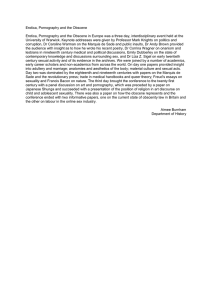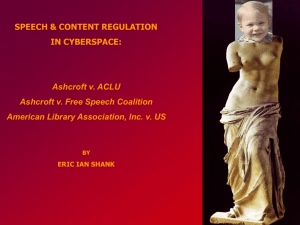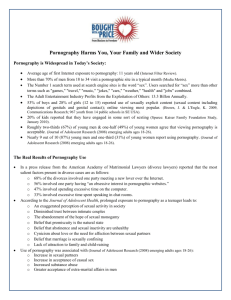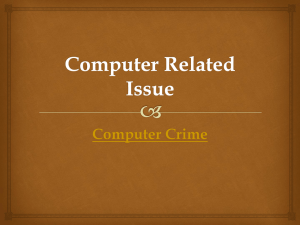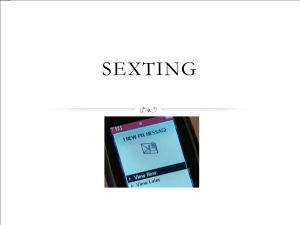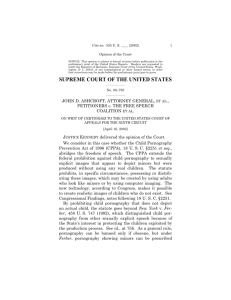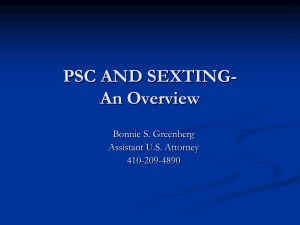A liberdade de expressão e a regulação dos conteúdos ilícitos na
advertisement
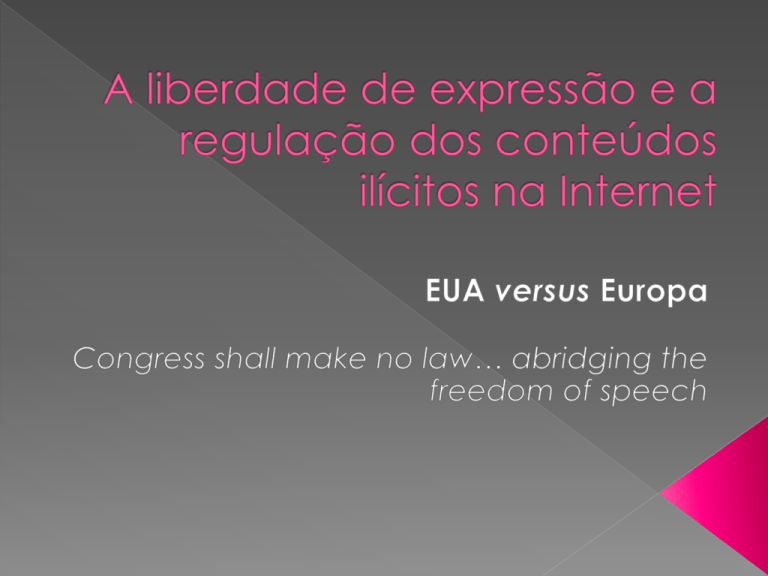
The Child Pornography Prevention Act of 1996 (CPPA) The Free Speech Coalition Tramitação processual 1) United States District Court 2) Ninth Circuit 3) Supreme Court The principal question to be resolved then, is whether the CPPA is constitutional where it proscribes a significant universe of speech that in neither obscene under Miller nor child pornography under Ferber. Is the sale and distribution of obscene material by mail protected under the First Amendment? Obscene materials are those that: 1) the average person, applying contemporary community standards, find, taken as a whole, appeal to the prurient interests; 2) That depict or describe in a patent offensive way, sexual conduct specifically defined by applicable state law 3) And that, taken as a whole, lack serious literary, artistic, political or scientific value Só a pornografia infantil ‘obscena’, de acordo com o Miller test, é proibida? State interest in protecting children allows laws prohibiting ditribution of images of sexual performances by minors even where content does not meet tests obscenity. Conclusão CPPA extends to images that appear to depict a minor engaging in sexually explicit activity without regard to the Miller requirements (págs. 6-11) CPPA prohibits speech that records no crime and creates no victims by its production. Virtual child pornography is not ‘intrinsically related’ to the sexual abuse of children, as were the materials in Ferber (págs.11-13) CPPA - §2256(8)(B) Child pornography means any visual depiction, including any photograph, film, video, picture, whether made or produced by electronic, mechanical or other means, of sexually explicit conduct, where: (B) Such visual depiction is, or appears to be, of a minor engaging in sexually explicit conduct The CCPA is necessary because pedophiles may use virtual child pornography to seduce children. There are many things innocent in themselves (…) that might be used for immoral purposes, yet we would not expect those to be prohibited. Virtual child pornography whets the appetites of pedophiles and encourages them to engage in illegal conduct. The mere tendency of speech to encourage unlawful acts is not a sufficient reason for banning it. To eliminate the market for pornography produced using real children it’s necessary a prohibition on virtual images as well. Few pornographers would risk prosecution by abbusing real children if fictional, computerized images would suffice. Producing images by using computer imaging makes very difficult to prosecute those who produce pornography by using real children. Protected speech may be banned as a means to ban unprotected speech. CPPA - §2256(8)(B) Child pornography means any visual depiction, (…), of sexually explicit conduct, where: (D) such visual depiction is advertised, promoted, presented, described, or distributed in such a manner that conveys the impression that the material is or contais a visual depiction of a minor engaging in sexually explicit conduct. The determination would still depend principally upon the content of the prohibited work. The determination turns on how the speech is presented, not on what is depicted. For the reasons we have set forth, the prohibitions of §§2256(8)(B) and 2256(8)(D) are overbroad and unconstitutional. Contexto do diploma Nova redacção do §2256 (8)(B): “(…) that is, or is indistinguishable from, that of a minor (…)” A prova de não uso de crianças em material de pedofilia é considerada uma affirmative defense Recomendação 98/560/CE Convida os EM’s a tomarem medidas para reforçar a protecção dos menores nos sectores da radiodifusão e da Internet e a desenvolvam medidas em prol dos menores, nomeadamente iniciativas para facilitar um acesso mais vasto aos serviços de informação, evitando simultaneamente conteúdos potencialmente lesivos
